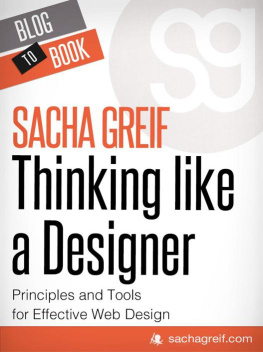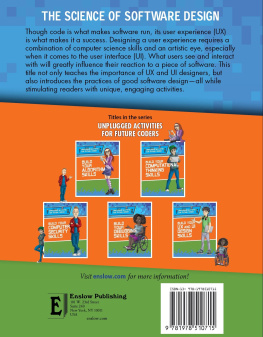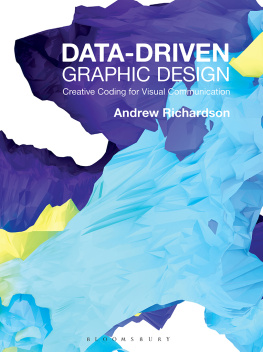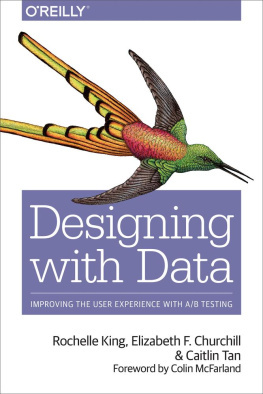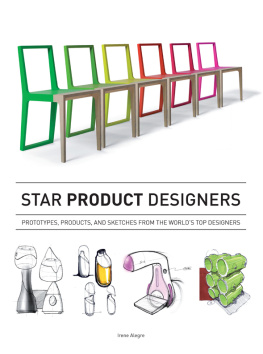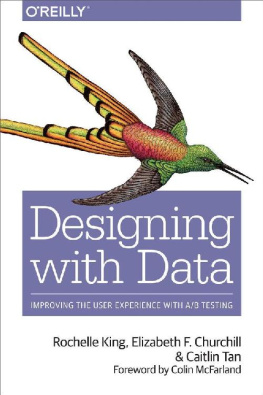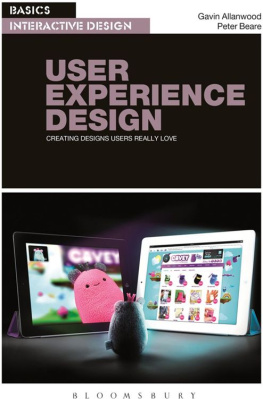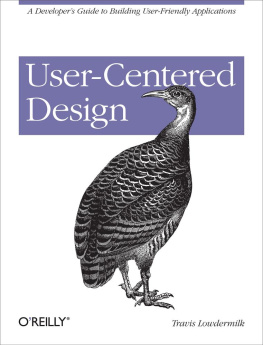Table of Contents

Copyright 2013 by Phillip A. Harris
All rights reserved. This book or any portion thereof
may not be reproduced or used in any manner
whatsoever without the express written permission of
the publisher except for the use of brief quotations in a
book review.
Printed in the United States of America
First Printing, 2013
ISBN 978-0-578-11724
K & R Publications
E. Stroudsburg, PA 18301
www.krpublications.com
Phillip A. Harris
Twitter: @pharrisdesigner
www.phillipaharris.com
phil@phillipaharris.com
Dedication
For my beloved,
Christina, Kayla and Riley
About The Author

Phillip A. Harris has been working within the digital design industry since 1996 and is a recognized expert on the subjects of User Experience Design, Usability Testing, Interaction Design, Graphic Design, Instructional Design and Information Architecture. He has worked within some of the worlds most successful media organizations including Universal Music Group, Digitas, NBC, HBO, BET and recently AOL where he was a part of the Key Experiences team, devoted to creating new products and content distribution systems that include mobile and desktop platform centric systems for AOL.com / Huffington Post and their premium content network partners.
Acknowledgements
Id particularly like to thank the Interactive One BP NEXT Team for their needed support throughout this entire project. They deserve special mention for their patience, tolerance, and timely council on varying perspectives relating to some of the topics covered in this book.
Sun Sachs of Townsquare Media provided a great platform for me to experiment, fail and learn while we worked together at AOL. He has been a great teacher, mentor and friend. Being a part of his team was one of my fondest career-related experiences and memories.
Special thanks to Dane Petersen of Adaptive Path for providing his perspectives and experiences on the subject matter covered in this book.
Id like to express my deep gratitude to Andre Mohr of Frog Design for his time in discussing his user experience perspective, through creative process and his personal artistic influences.
Many thanks to FICO User Experience Senior Manager Steve Dickman for his help during the research and development phase of this project. I appreciate your input.
Thanks to Garth Gale and Sharif Davis for their support and council during this project.
Major thanks to my daughters Kayla and Riley for always cheering me on and always taking the time to provide great feedback on the projects that Im working on.
Words can never express the gratitude I have for my Dad and my Uncle Mike, you both have given me many great gifts in life - too many to list here, but Id like you to know that I treasure each and every one of them more than you can ever know.
Finally, thank you to my loving wife, Christina. You are the most amazing companion a man could ever hope to have. I want to thank you for always being so supportive of my career and my choices. Without your support, strength and abiding faith, I would likely never have done so much or come so far, and Ill never be able to thank you enough for all youve done and meant to me.
Introduction
This is a book about digital design and how user experience (UX) is changing that field radically. I am a digital designer and I see the effects of those changes every day.
At one time, almost all digital designers used methods that depended on ideas coming from the top. These ideas would then filter down through a process of design, production, then, at the end, entering the marketplace. Products were presented to consumers as finished entities. If changes were going to be made, they had to wait until the next model or version. This design-production model was hardly perfect. It came from another era when our economic life was still limited to bricks-and-mortar enterprises that built physical productsoften big physical products.
Then, as now, it made sense for an architect to design a building by creating a blueprint that was as close as possible to the final product. If architectural blueprints were to have any meaning, they had to express something close to the physically finished building. If huge changes were necessary, especially after the start of actual construction, the architect had failed. Once a building is framed up, basic alterations become incredibly costly, difficult and time-consuming. Tearing down the partially completed wing of a house, and rebuilding it from the ground up, can cost as much as the whole house, adding months to construction schedules.
Design has always been a part of consumer products. A few decades ago, as the technological age began, there were already many mass-produced products like cars, TVs and washing machines on the market. All of these began on the drawing board. These larger, physical products were, and still are, designed within a framework of historical precedent and well-known consumer preferences. If these goods perform the basic tasks theyre supposed to, then the different design elements are mostly in the extras, and in variations on well-known themes. We judge them by a combination of criteria based on fundamentals like longevity, comfort, and day-to-day performance, and on frills like backseat DVD players and leather upholstery. When a designer draws up specs for these kinds of products, he or she is working in a long tradition of experiencethat of millions of previous users and thousands of previous designers.
This from-the-top design method still works for the really big stuff, like homes, cars and household appliances. But retail websites, online games and mobile devices are different. We can design and post a website, attract users, get feedback, revise components, and even totally redesign the structure and content in hours. When you can get accurate feedback from users, then analyze and revise in a virtual instant, it only makes sense to do it. Consumers are (impatiently) waiting for the result. When a product is a commercial failure, its simply in the users instruction that change is needed. Thats the potential of UX: the creation of products and services aimed directly at the user.
This book looks at UX from various angles: how it came to be, how it works, who employs its methods, why they do it, and who it serves. Though digital designers might be its most obvious audience, Ive written it in language that should be accessible to all readers, even those who have only a smattering of digital knowledge. If you can perform basic digital tasks, such as successfully completing an order from Amazon or eBay, you should be able to understand most of whats here. If youve ever created a web page, no matter how basic, that experience will give you the context to understand what Ive written in a different way. Even if you dont realize it, youve acted as a designer yourself. Youll see that when you get to sections covering buttons, text and other web page components. A digital designer deals with those issues every day.
The most obvious audience of my fellow digital designers will already know about many of the things I describe. A designer already has experience with wireframes, prototypes and iterations. However, he or she might not know how their day-to-day work fits into the larger contexts of art, commerce and history. This book will serve as an introduction to those relationships. It will also give designers an overview of digital design in its present-day age of transition. If we step back and view our field as a whole, we can better see its relationships to the broader world. We are in a business providing essential services, not just to individual users, but also to clients whose products are aimed at those users. Digital designers understand formats, menus and analytics, but not all of us have considered how our design practices affect our clients goals.


